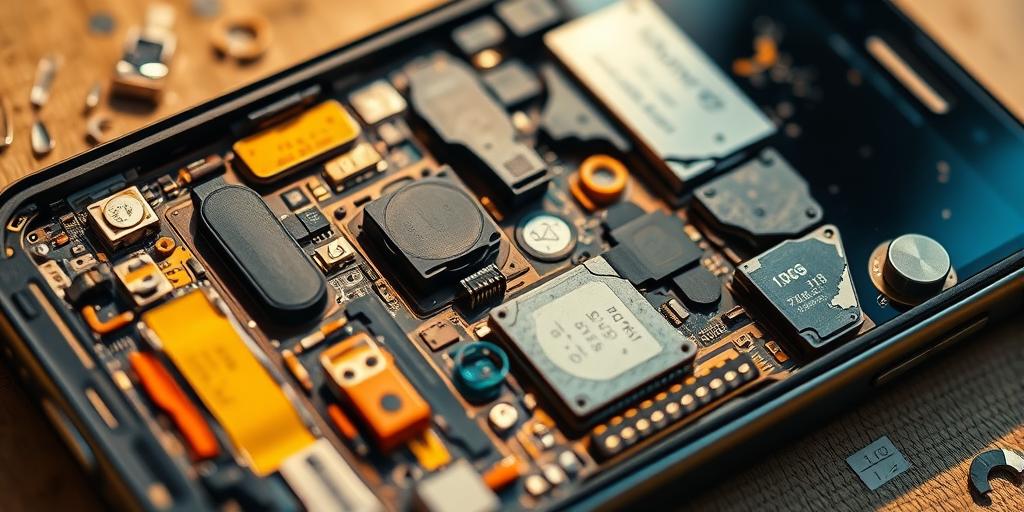Have you ever wondered why some gadgets seem to break down so quickly? It’s not always a case of bad luck or shoddy manufacturing; sometimes, there’s a more sinister reason at play: planned obsolescence. This controversial practice, where manufacturers intentionally design products with a limited lifespan, is a hot topic, and we’re diving deep to uncover the truth behind why some gadgets are built to fail. Prepare to be shocked by the secrets of planned obsolescence and how it impacts your wallet and the environment.
Planned Obsolescence: The Shocking Truth About Gadgets That Break Down Too Soon
Planned obsolescence is a deliberate strategy used by companies to shorten the lifespan of their products. This isn’t about accidental defects, but a calculated decision to limit durability, making consumers buy replacements sooner than they should. But why do companies resort to such a sneaky tactic? The primary motivation is, of course, profit. By forcing consumers to regularly upgrade, companies ensure consistent sales and higher revenue streams. There’s a massive financial incentive driving the creation of gadgets designed for the landfill.
The Economics of Planned Obsolescence
Think about the latest smartphone, laptop, or even a kitchen appliance. The technological advancements are impressive, but they also frequently render previous models obsolete. This isn’t always genuine progress, however. Many times, it’s a clever marketing ploy that makes consumers think that they need a newer model, creating a cycle of purchasing and discarding. This creates huge profits for corporations, but the environmental impact can be devastating. The lifecycle of planned obsolescence often leads to unnecessary electronic waste and resource depletion.
Psychological Triggers and The Power of Marketing
The psychology behind planned obsolescence involves carefully constructed marketing campaigns that convince consumers that upgrading is essential. New colors, minor feature updates and a continuous stream of marketing hype are all part of the strategy to make the latest model seem infinitely more desirable. They convince us to upgrade, even if the old gadget is still fully functional, through a powerful combination of social influence and marketing wizardry. This marketing cleverly uses planned obsolescence to make us crave the new model, and thus, the planned obsolescence cycle repeats itself, leading to more and more electronic waste. It is truly remarkable that such a clever system of planned obsolescence has had such a profound impact on our consumer habits.
The Environmental Cost of Built-to-Fail Gadgets
The environmental consequences of planned obsolescence are significant and far-reaching. The constant cycle of production and consumption results in a massive amount of e-waste. E-waste contains hazardous substances like lead, mercury, and cadmium, posing significant risks to both human health and the environment. This is not just about landfill space; it’s about toxic materials contaminating water sources, soil, and air. The environmental catastrophe of planned obsolescence will soon require us to implement far-reaching changes to avoid an environmental collapse.
Recycling Isn’t Always The Answer
While recycling is crucial, it’s not a complete solution to the problem. Recycling facilities aren’t always equipped to handle the complex composition of modern electronics. Moreover, the energy and resources required for recycling are substantial, adding to the environmental footprint of the whole process. So, while recycling is good, a focus on reducing the quantity of electronic waste is even better.
The Sustainability Imperative
The solution to the problem of planned obsolescence requires a significant shift in our mindset as consumers and a commitment from manufacturers to produce more sustainable products. Consider buying refurbished gadgets or opting for brands with a proven commitment to durability and repairability. And we as citizens need to pressure manufacturers to stop manufacturing devices that are designed to fail.
How to Fight Back Against Planned Obsolescence
As consumers, we have the power to combat planned obsolescence. By making informed decisions and demanding better from manufacturers, we can start to reverse this damaging trend. Here are some actionable steps that you can take.
Support Sustainable Brands
Choose companies that prioritize durability and repairability. Look for brands with robust repair programs and readily available parts. When you are buying something, always look into the brand’s repair program, or lack thereof. These are clear indicators of how committed the company is to creating gadgets that are designed to last.
Buy Refurbished
Consider buying refurbished electronics. This helps cut down on e-waste and provides a more sustainable alternative. There are many certified refurbished products available, allowing you to save money and help the environment simultaneously.
Demand Transparency
Manufacturers should be transparent about the design life and repairability of their products. Pressure them to provide this information upfront and demand greater accountability.
Learn to Repair
Consider learning basic repair skills. This will empower you to fix your own gadgets, extending their lifespan and reducing your reliance on replacements. This is a very effective way to push back against planned obsolescence.
Take action today! Demand better from manufacturers and make sustainable choices. Together, we can push back against planned obsolescence and create a more responsible future for electronics. We need to push for stricter regulations, better labeling standards, and greater accountability from corporations. The future of our environment depends upon it!




